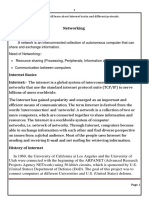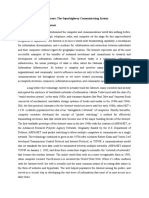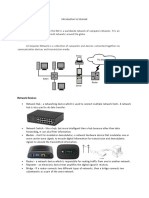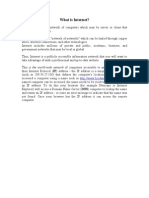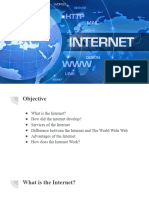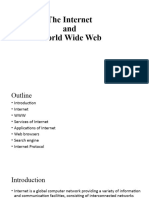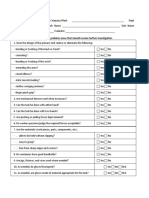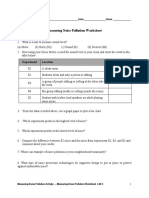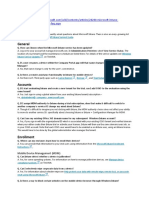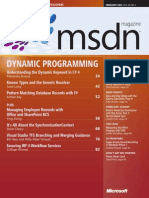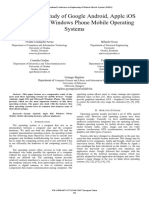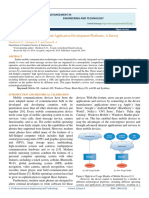0% found this document useful (0 votes)
186 views35 pagesInternet & Windows Operating System
The document discusses the history and development of the Internet and Windows operating systems. It provides background on ARPA and how they launched the first experimental computer network in 1969. Vinton Cerf is recognized as a "Father of the Internet" for his role in developing TCP/IP protocols and Internet architecture. The Windows operating system dominates the personal computer world, with over 90% market share. Key aspects like the graphical user interface, multitasking, and peripheral support are discussed.
Uploaded by
Annie ArchimedesCopyright
© © All Rights Reserved
We take content rights seriously. If you suspect this is your content, claim it here.
Available Formats
Download as PDF, TXT or read online on Scribd
0% found this document useful (0 votes)
186 views35 pagesInternet & Windows Operating System
The document discusses the history and development of the Internet and Windows operating systems. It provides background on ARPA and how they launched the first experimental computer network in 1969. Vinton Cerf is recognized as a "Father of the Internet" for his role in developing TCP/IP protocols and Internet architecture. The Windows operating system dominates the personal computer world, with over 90% market share. Key aspects like the graphical user interface, multitasking, and peripheral support are discussed.
Uploaded by
Annie ArchimedesCopyright
© © All Rights Reserved
We take content rights seriously. If you suspect this is your content, claim it here.
Available Formats
Download as PDF, TXT or read online on Scribd
/ 35











